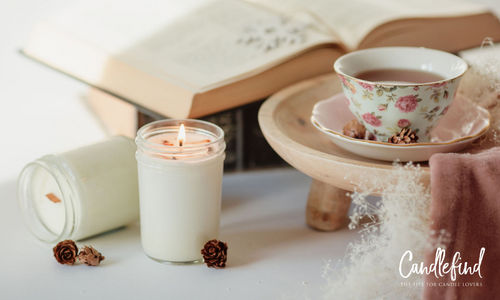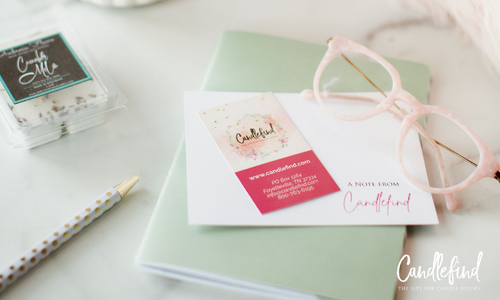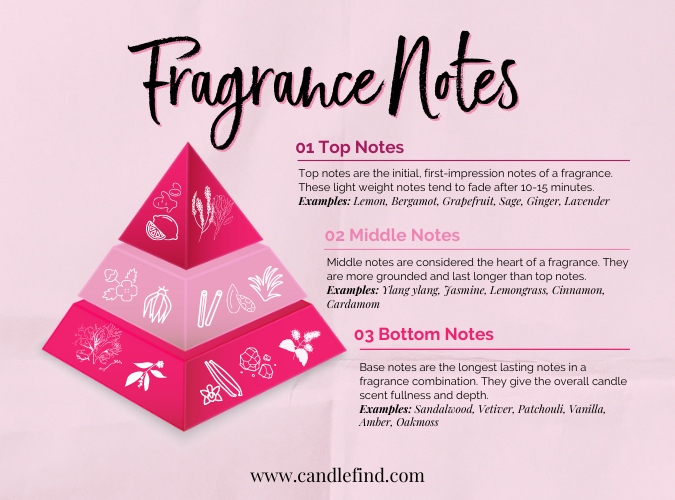Picture this…You are relaxing at an office party or hanging out with some friends on bowling night. Someone happens to casually mention something strange happened with a great smelling candle they just brought home. It smelled so different in the store! You chime in about fragrance notes, cold sniffs, and fragrance balance. It’s forty minutes later and you finally notice the glazed look in everyone’s eyes. Did three of them just leave? Horrified, you know you’ve done it again. You’ve managed to break out your candlespeak for casual candle lovers, who affectionately dub you the crazy candle lady (or guy).
We get it. Trust us, we do! The science behind fragrance notes is really important for all those interested in home fragrance, whether they are casual users or as candle-obsessed as we are. We crazy candle people can talk hours on end about this stuff, but some may just want the quick and dirty details. Here’s how you can explain fragrance notes without clearing the room.
FRAGRANCE NOTES
Origin
The idea behind top, middle, and base notes was jumpstarted by G. W. Septimus Piesse, an Englishman who authored the book The Art of Perfumery in 1857. (A book we highly recommend reading, by the way.) Piesse was a perfumer and a chemist, so he looked at scent and fragrances from a very scientific view. Piesse likened the idea of scent notes to the musical notes in a musical scale. Each scent (or note) in a fragrance can be considered as either a top, middle, or base note – each with different functions and, therefore, different results depending on how they are blended together. And while his focus was on perfumes, the idea behind fragrance notes extends to home fragrance, including candles and wax melts.
FRAGRANCE NOTES
Top Notes
When you first take a whiff of your candle at the store or at home, the top notes are what you are generally recognizing. They are the notes that are giving that first impression of your candle, so these notes are super important to candle makers. They want you to fall in love with the initial whiff (or cold smell), because that’s what will prompt you to buy it. These notes generally tend to be light, fresh, and clean. These scent notes have a lighter molecular structure, so that they tend to take a backseat to the other fragrance notes fairly quickly once the wax is warmed.
Top notes give you your first impression of a candle fragrance.
Despite that, they do play an important role in the overall mix and scent blend of the entire candle fragrance. Citrus scents are commonly used as top notes in candle fragrances, since they are very versatile, light-weight, and tend to be energizing. This psyches the candle lover up for an enjoyable experience. Some notes that are commonly used as top notes are bergamot, lemon, and orange.
There are a number of other types of fragrances that can be used as top notes, such as lighter florals and some herbs. You might also hear of top notes referred to as head notes. While in a perfume, these notes tend to fade within 10-15 minutes, in candle wax, it’s a bit less ‘clean.’ Since the fragrance is bound throughout the wax, you can still smell the top, or head notes, at different stages throughout the life of your candle.
FRAGRANCE NOTES
Middle Notes
Ahhh…the middle notes. These are often referred to as heart notes, as they are considered the heart or true essence of the fragrance. Top notes should lead you smoothly into the middle notes, which are more balanced and longer lasting. After burning your candle for about 20-30 minutes, have you ever noticed that the scent changed? That is because the heart notes are really starting to develop and become more pronounced, as the lighter, top notes decide it’s time to take a backseat.

Middle notes have a heavier molecular structure than the top notes, which means they can hang around quite a bit longer and make up the more dominant candle scent profile. Many florals and spices are commonly used as middle notes. Some examples are rose, jasmine, cinnamon, cardamom, and ylang ylang.
FRAGRANCE NOTES
Base Notes
Rounding out a candle’s fragrance profile are the base notes – weighter, longer-lasting notes that give you a lingering impression of the overall candle scent. As expected, these notes tend to be warmer, richer, and heavier. In the perfume world, they are considered dry down notes…notes that would linger on the skin for hours. However, in the wax world, we are really referring to those notes that really become noticeable about 30-40 minutes into a burn and that give us the ‘end whiff,’ so to speak. Some of the more popular base notes include vanilla, amber, musk, vetiver, and patchouli.
While the top notes may be the ones to make you pull the candle off the shelf, the middle and base notes make up the majority of the candle’s soul.
FRAGRANCE NOTES
Pulling It All Together
Interestingly, while the top notes may be the ones to make you pull the candle off the shelf, the middle and base notes make up the majority of the candle’s soul. You’ll have more lasting memories of the heavier base notes, too. Is it an exact science? Nope. There is a lot of creativity in the blending of candle fragrances, all which can be influenced by other factors, such as the type of wax, essential versus fragrance oils, and even the type of container used. That’s the fun part! Exploring different candle fragrances from different chandlers and noting how the fragrance blends appeal to your personal taste is a never-ending project. But knowing about the basics of fragrance notes helps your friends form a foundation to get more enjoyment out of the experience.
We’ve just scratched the surface about fragrance notes in this article, and we’ll go into much deeper dives over the next several months. We’ll explore individual scent notes, how they pair with others, and how you can even become more creative with your scent choices. Be sure to stick around to get it all!
In the meantime, refer to our handy fragrance notes pyramid and feel free to share that with your casual candle-loving family and friends.










